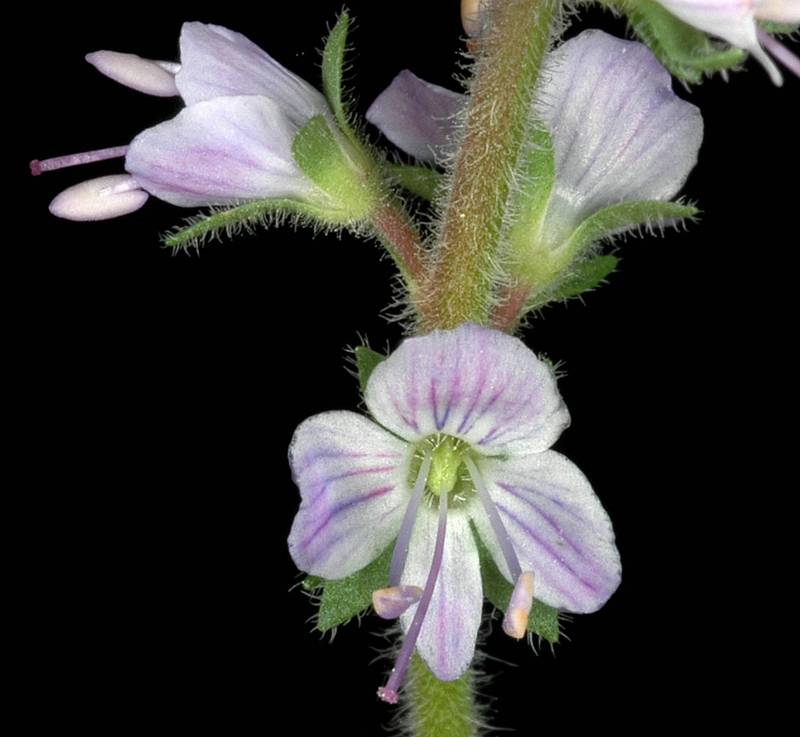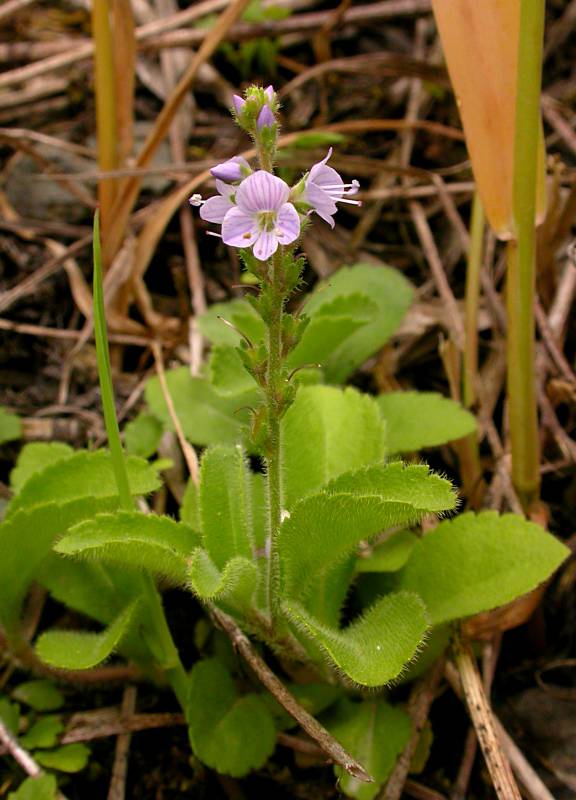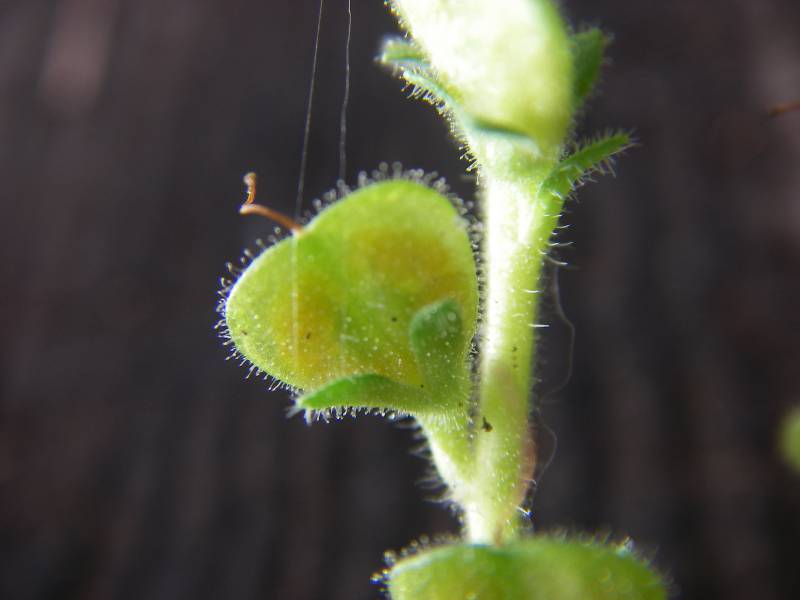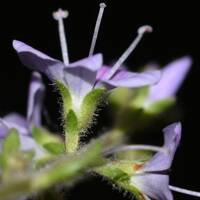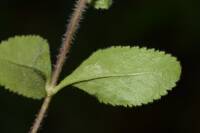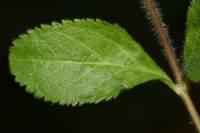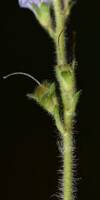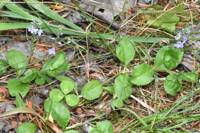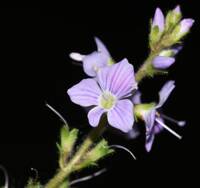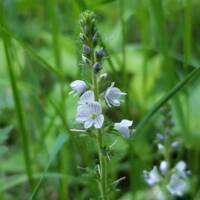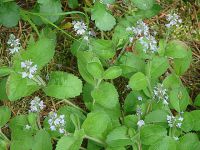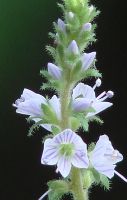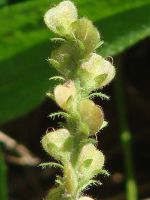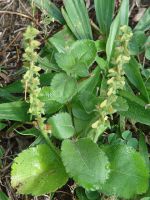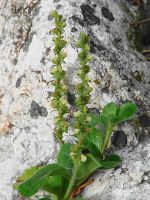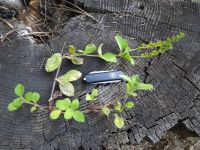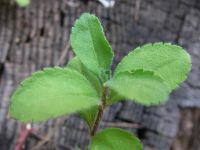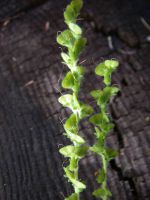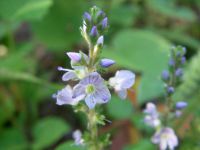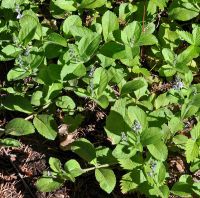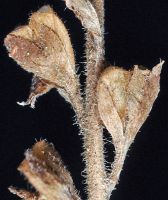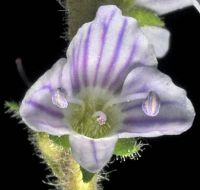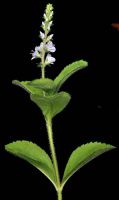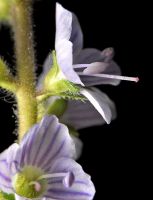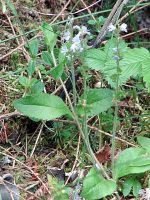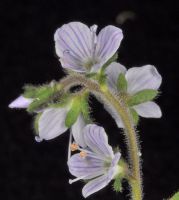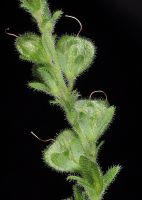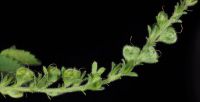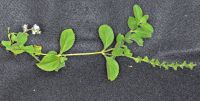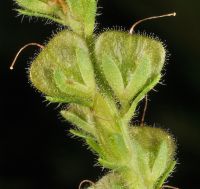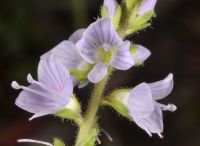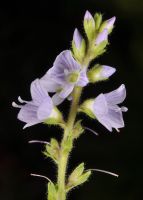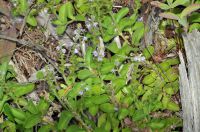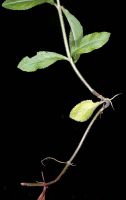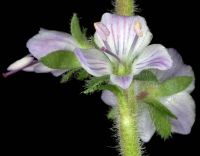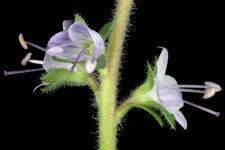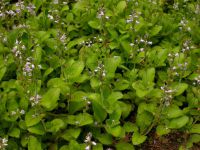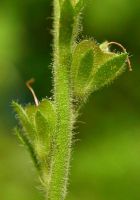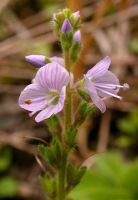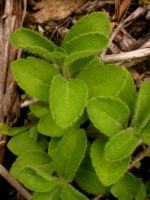Distribution: Occurring chiefly west of the Cascades crest in Washington; British Columbia to California, east to the northern Great Plains, Great Lakes region, and northeastern North America.
Habitat: Roadsides, fields, balds, prairies, ditches, forest edge, lawns, wastelots, and other disturbed open areas at low to middle elevations.
Flowers: April-July
Origin: Introduced from Europe
Growth Duration: Perennial
Conservation Status: Not of concern
Pollination: Bees, flies
Fibrous-rooted perennial, the lower portion of the stem creeping and rooting at the nodes, with reduced leaves; upper portion of the stem erect, 0.5-2.5 dm. long; herbage and inflorescence with prominent, spreading hairs.
Leaves opposite, elliptic or elliptic-ovate, narrowed to a short petiole, 1.5-5 cm. long and 0.6-3 cm. wide, finely serrate
Inflorescence of spike-like racemes on long peduncles arising from the leaf axils; pedicels 1-2 mm. long, surpassed by the small, alternate, subtending bracts; calyx of 4 sepals; corolla light blue, sometimes with lavender stripes, 4-8 mm. wide, rotate, 4-lobed; style 2.5-4.5 mm. long; stamens 2.
Capsule 4 mm. high, broadly triangular-cordate, nearly truncate.
Publication: Sp. Pl. 1: 11. 1753.
PNW Herbaria: Specimen records of Veronica officinalis in the Consortium of Pacific Northwest Herbaria database
WA Flora Checklist: Veronica officinalis checklist entry
OregonFlora: Veronica officinalis information
E-Flora BC: Veronica officinalis atlas page
CalPhotos: Veronica officinalis photos

